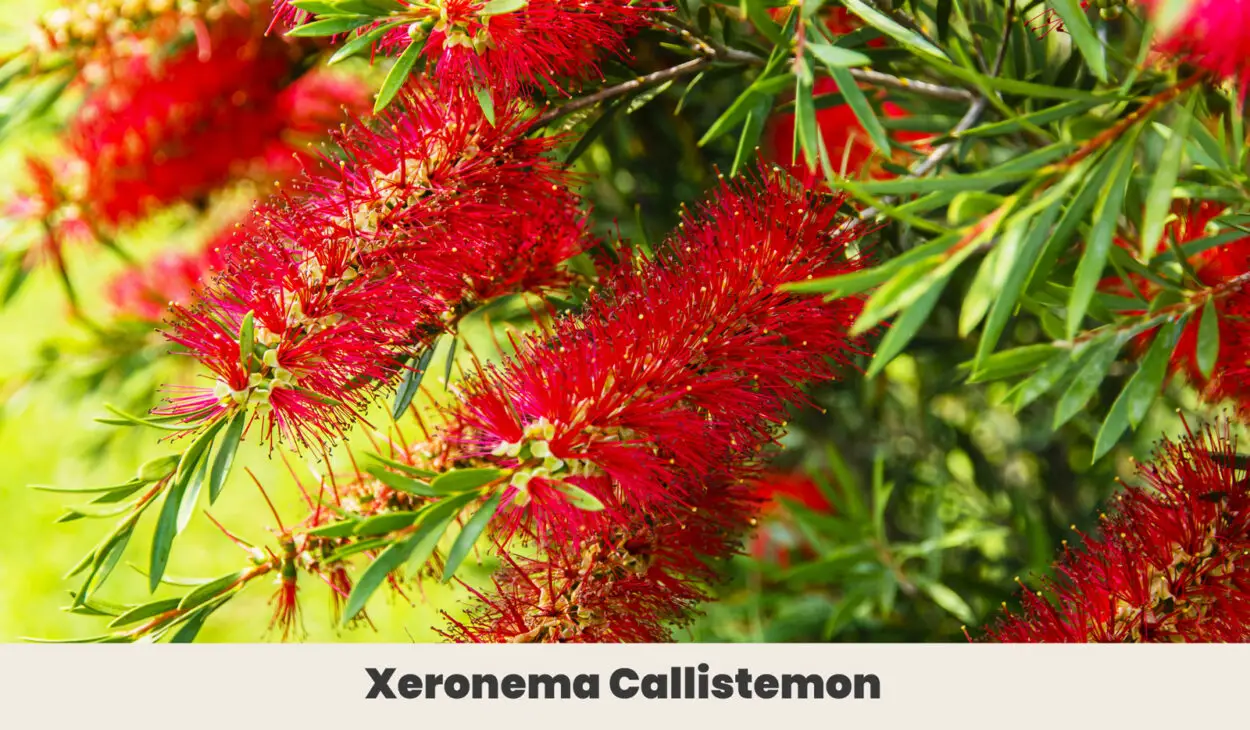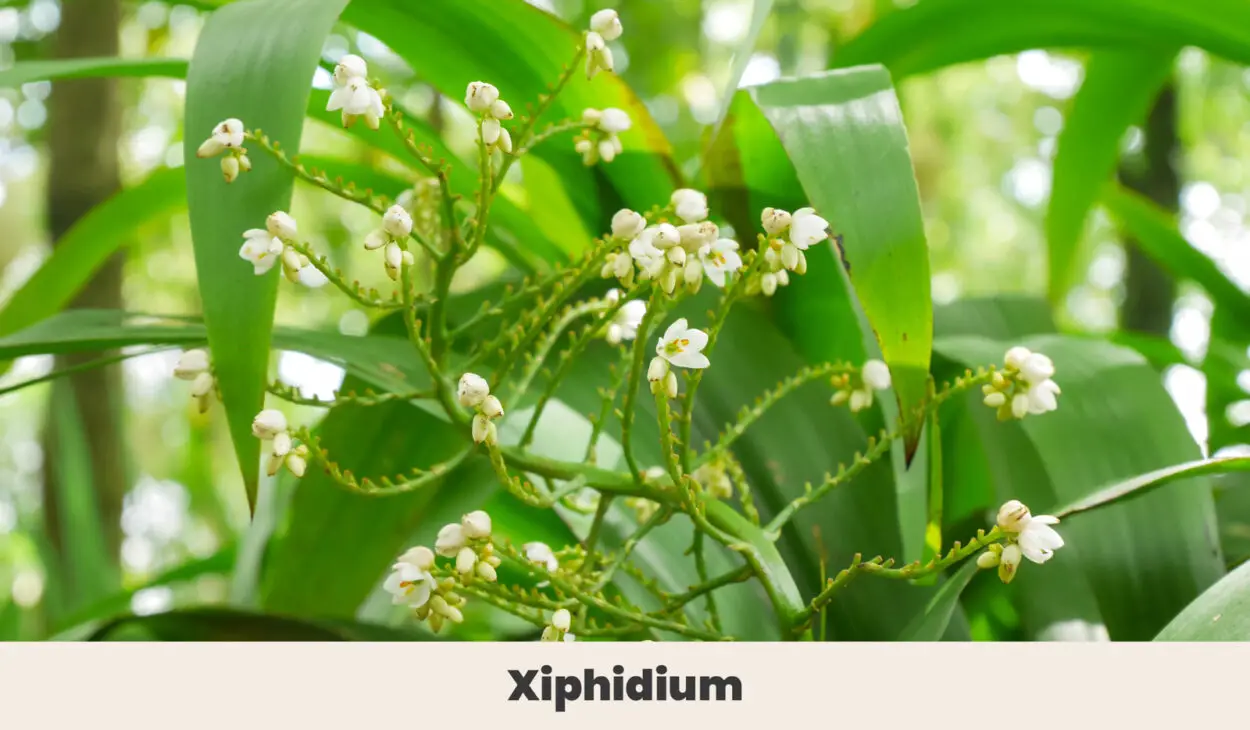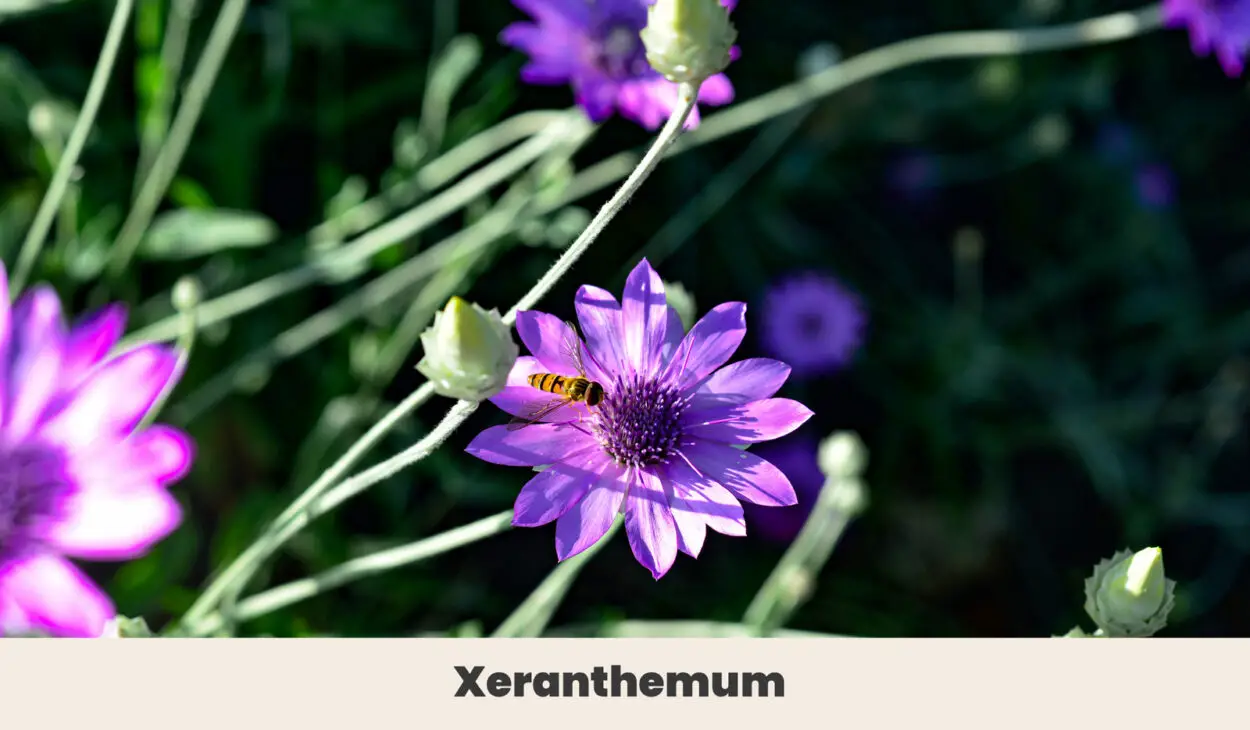8 Extraordinary Flowers That Start With X + Growing Guide Charts

This post follows our research editorial guidelines.

In the realm of botany, nature never fails to fascinate through xeric blooms, enchanting fragrances, and a charm that keeps avid gardeners and enthusiasts captivated. Get ready to dive into this extraordinary world of flowering plants, where you’ll find fabulous flora starting with the letter X.

This floral odyssey unravels some extraordinary flowers so you can add a touch of uniqueness and mystique to the landscape.
Quickly Find Flowers Starting with X
1. Xerochrysum (Xerochrysum bracteatum)

One of the most famous yellow wildflower species to plant in your garden—it is prized for its bright yellow flowers, which stay lively in appearance even after drying out. Its silvery, long leaves complement its appearance.
You can find varieties in white, yellow, pink, and red.
The plant symbolically represents immortality and longevity. Plant them around the borders of flowerbeds or use cut flowers to make vibrant dried flower arrangements.
| Common Names: | Strawflower, golden everlasting, immortelle, yellow paper daisy |
| Growth Rate: | Normal (Takes 1 to 2 years to mature) |
| Native Range: | Australia |
| Hardiness Zones: | 8 to 10 |
| Soil Needs: | Loamy, moist but well-drained soil with an alkaline or neutral pH |
| Exposure: | Full sun |
| Blooming Period: | Long (late spring till frost) |
| Water needs: | Water twice every week, ensuring the soil stays moist |
2. Xanthoceras (Xanthoceras Sorbifolium)

This deciduous white and pink flowering tree is native to China. Xanthoceras is popular among gardeners around the globe due to its strikingly pleasing appearance and blooming period.
The tree has a straight trunk and a rounded crown with fragrant clusters of flowers, which are followed by oval-shaped and brown-colored fruits.
I recommend finding a nice area in the corner of your garden and letting the magnificent tree grow on its own. Along with providing green and lush foliage, the tree produces a mesmerizing and colorful bloom.
| Common Names: | Yellowhorn, popcorn shrub, shiny yellowhorn, flowering yellowhorn tree |
| Growth Rate: | Slow |
| Native Range: | Northern China |
| Hardiness Zones: | 4 to 7 |
| Soil Needs: | Sandy, chalky, or loamy but well-drained soil |
| Exposure: | Full sun |
| Blooming Period: | Short (May) |
| Water needs: | Water at least twice a week, but avoid water logging the plant. |
3. Xerophyllum (Xerophyllum Sp.)

The white spherical racemes filled with small white flowers, which are present on the top of the stem, give Xerophyllum its unique appearance. A tall and upright stem supports the globular flower cluster, reaching an impressive height of 2 meters.
In the realm of flowers, the Xerophyllum is linked to new beginnings, challenges, and celebration. Although it’s a food source for many herbivorous animals, the plant holds significant ornamental value in the eyes of a gardener.
I like planting them along the borders and caring for them well, as it will take almost 5 years for the plant to mature.
Nevertheless, your struggle growing the plant will be fruitful when you see the cream-colored flower clusters rising high in the air when it blooms.
| Common Names: | Beargrass, Indian basket grass |
| Growth Rate: | Slow |
| Native Range: | Western Northern America |
| Hardiness Zones: | 5 to 9 |
| Soil Needs: | Loamy, sandy, well-drained soil |
| Exposure: | Full or partial sun |
| Blooming Period: | Long (May to August) |
| Water needs: | Low water requirements |
4. Xeronema Callistemon

Native to the mainland cliffs of New Zealand, the Poor Knights Lily has distinct sword-like leaves which grow up to one meter in length. The tip of the leaves turns to bright-red inflorescence, which resembles a bottlebrush.
The unique appearance of the plant makes it stand out. The dark-green and glossy leaves, complimented by the vividly-red colored inflorescence, can become the centerpiece of your garden.
However, most gardeners prefer planting it along the borders and mostly in urban settings like along walls and in containers.
| Common Names: | Poor Knights Lily, King’s Park Special |
| Growth Rate: | Slow (takes 10 to 15 years to mature) |
| Native Range: | New Zealand |
| Hardiness Zones: | 9 to 11 |
| Soil Needs: | Well-drained and slightly acidic soil |
| Exposure: | Full or partial sun |
| Blooming Period: | Moderate (blooms in springtime) |
| Water needs: | Only water when the soil is dry. |
5. Xyris Difformis

Fostering a unique appearance of the leaves growing in a spiral around the main stem, the bog yellow-eyed grass produces yellow-colored flowers in the winter.
To keep the plant producing flowers, perform propagation by division every year.
As the plant is resilient, you can grow it on gravel or rocky terrain or add it to the borders and beds in your garden. Architects also use this plant in urban settings as it requires little maintenance and has excellent foliage.
| Common Names: | Bog yellow-eyed grass |
| Growth Rate: | Moderate |
| Native Range: | North America |
| Hardiness Zones: | 7 to 8 |
| Soil Needs: | Loves to grow in wet soil or shallow water |
| Exposure: | Full sun |
| Blooming Period: | Long (Summer and Fall) |
| Water needs: | Water frequently to keep the soil damp. |
6. Xiphidium

With thin but long and pointed leaves, Xiphidium blooms in the summer, and the blooms emerge in clusters on the stems produced before the blooming season.
The contrast of 6 white petals and a yellow center make it the perfect plant if you are aiming to add to your garden a striking shock of color and pattern.
Besides planting Xiphidium along the garden beds and borders, you can add this resilient plant to modern landscapes, for example, along the wall side and trellises.
| Common Names: | Dutch iris, Spanish flag, small bulbous iris, thunderbolt iris |
| Growth Rate: | Moderate (takes 2 to 5 years to mature) |
| Native Range: | North Africa, South Europe |
| Hardiness Zones: | 6 to 9 |
| Soil Needs: | Any soil type works until it’s well-drained and remains moist. |
| Exposure: | Full sun |
| Blooming Period: | Short (Summer) |
| Water needs: | Regular watering required |
7. Xanthosoma

Having strikingly large, heart-shaped leaves which can grow more than 3 feet in length, Xanthosoma is a plant with a distinct appearance. The plant also develops a 12-inch tall flower spike which can turn yellow or white.
Historically, the plant was spread throughout the Caribbean and America by migrating Indian tribes.
The plant is used in Brazilian medicine to treat bone-related conditions like osteoporosis and others. The plant can thrive well in subtropical regions, indoors, in a greenhouse, and even in containers.
| Common Names: | Yautia, Blue Tannia |
| Growth Rate: | Moderate (takes 2 to 5 years to grow) |
| Native Range: | South America, Central America, Caribbean |
| Hardiness Zones: | 8 to 10 |
| Soil Needs: | Loamy, moist, and organically rich soil |
| Exposure: | Partial shade |
| Blooming Period: | Moderate (Summer) |
| Water needs: | Regularly required water |
8. Xeranthemum

This eye-catching purple perennial plant is known to produce vibrant-colored flowers, which are commonly dried and used in arrangements.
The plant’s wiry stems are adorned with elliptic green-gray leaves and bloom throughout the summer, making your wildflower garden a heaven of vivid colors.
In many cultures, Xeranthemum is associated with everlasting beauty and immortality. However, in the Victorian era, floriography, or the language of flowers, was used, and these flowers represented seeking happiness in adversity.
Although they are vibrant, their texture is similar to paper and, when dried, can last for months in dried flower arrangements.
Throughout Europe, most gardeners have been planting them in their cottage gardens and along the borders and beds to add more colors to their gardens.
| Common Names: | Immortelle |
| Growth Rate: | Fast ( takes 1 year to mature) |
| Native Range: | Mediterranean region |
| Hardiness Zones: | 3 to 11 |
| Soil Needs: | Any soil type will work, but it should be well-drained. |
| Exposure: | Full sun |
| Ease of Care: | Low |
| Blooming Period: | Moderate (April to June) |
| Water needs: | Water regularly |
Final Thoughts
It’s the dream of every gardener to curate a garden that takes you through the colors of nature and lets you cherish the beauty it holds.
Keep exploring this never-ending realm of flowers, listen to your heart when selecting different flowering plants, and make your garden a sanctuary of calmness and peace.

